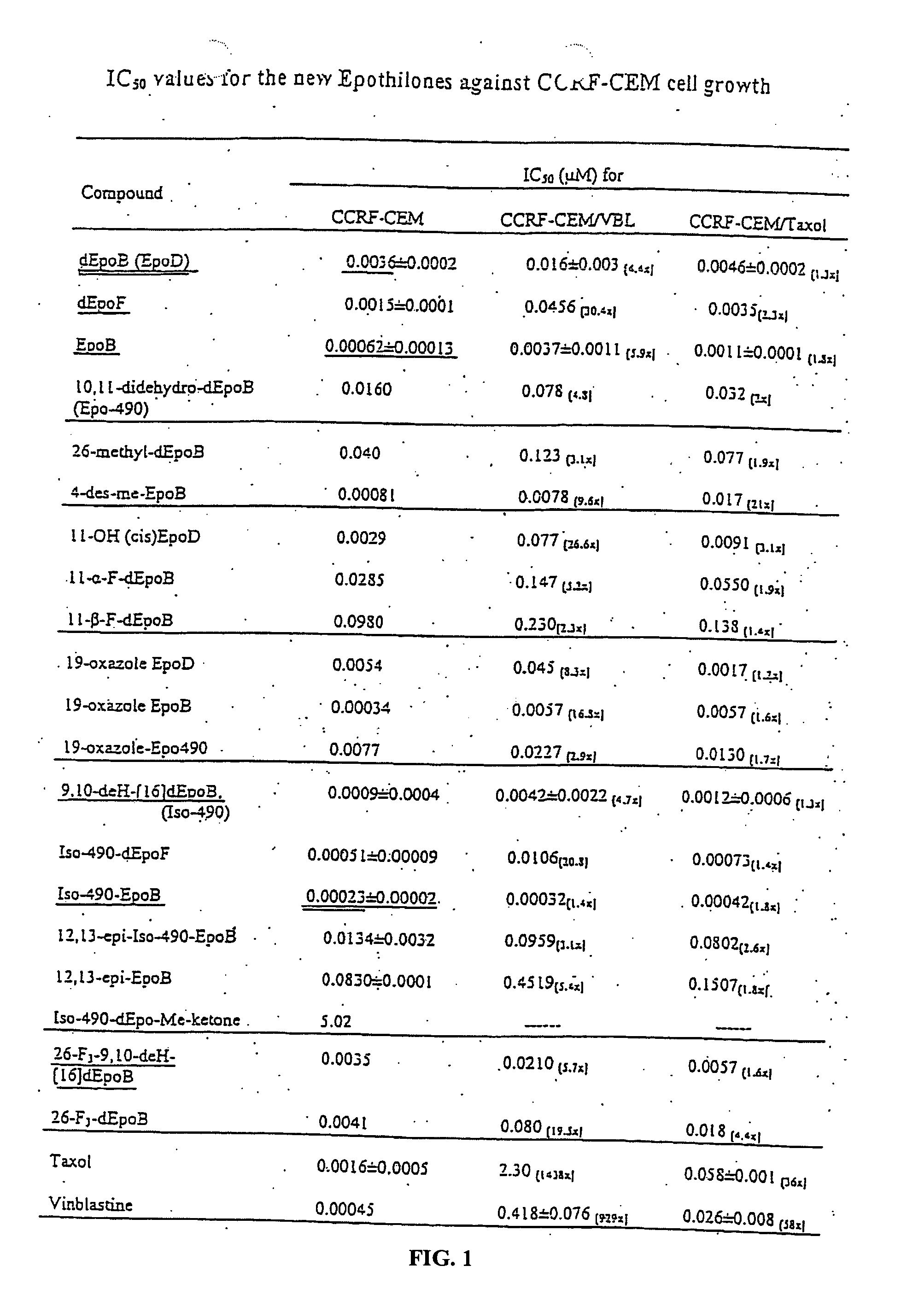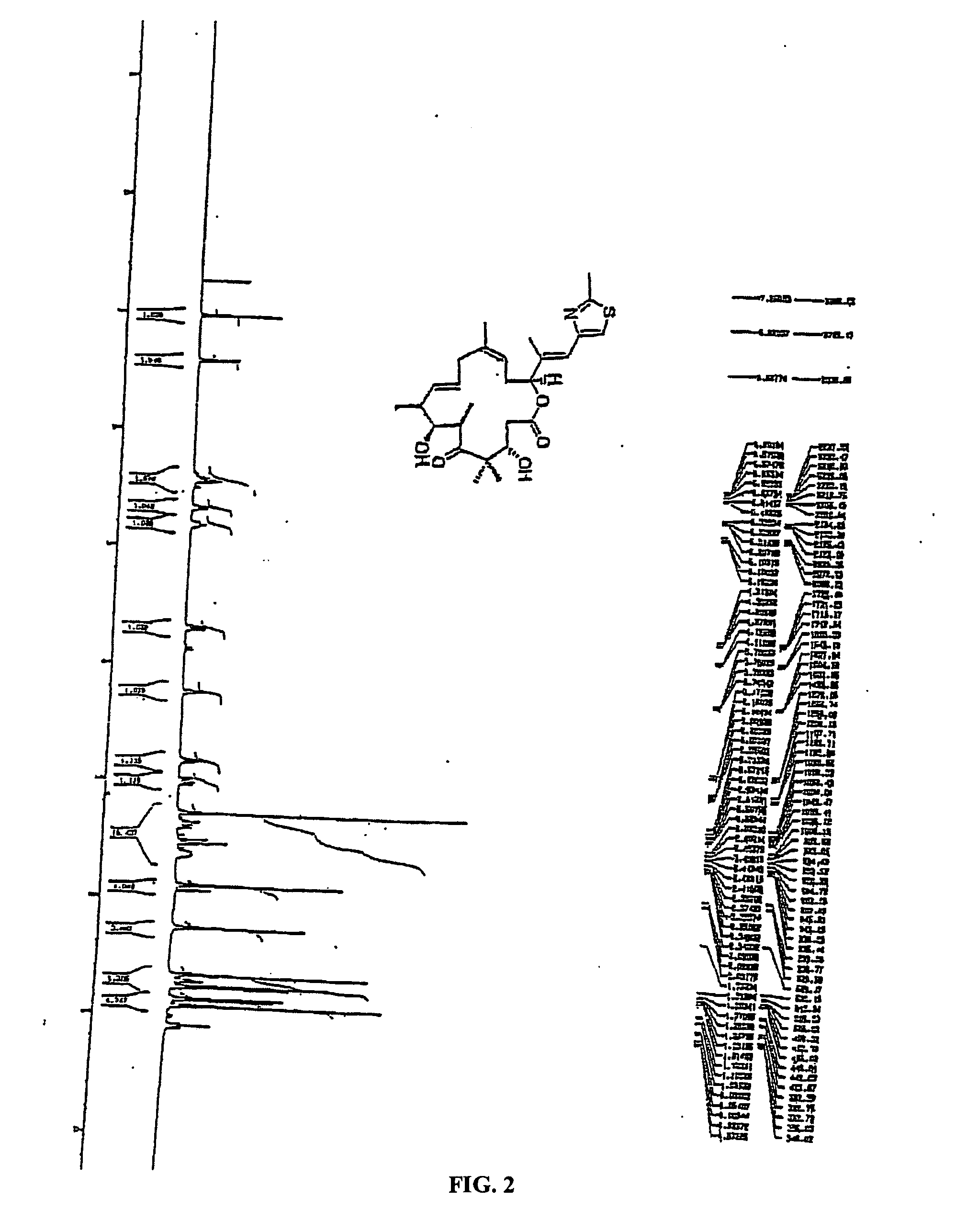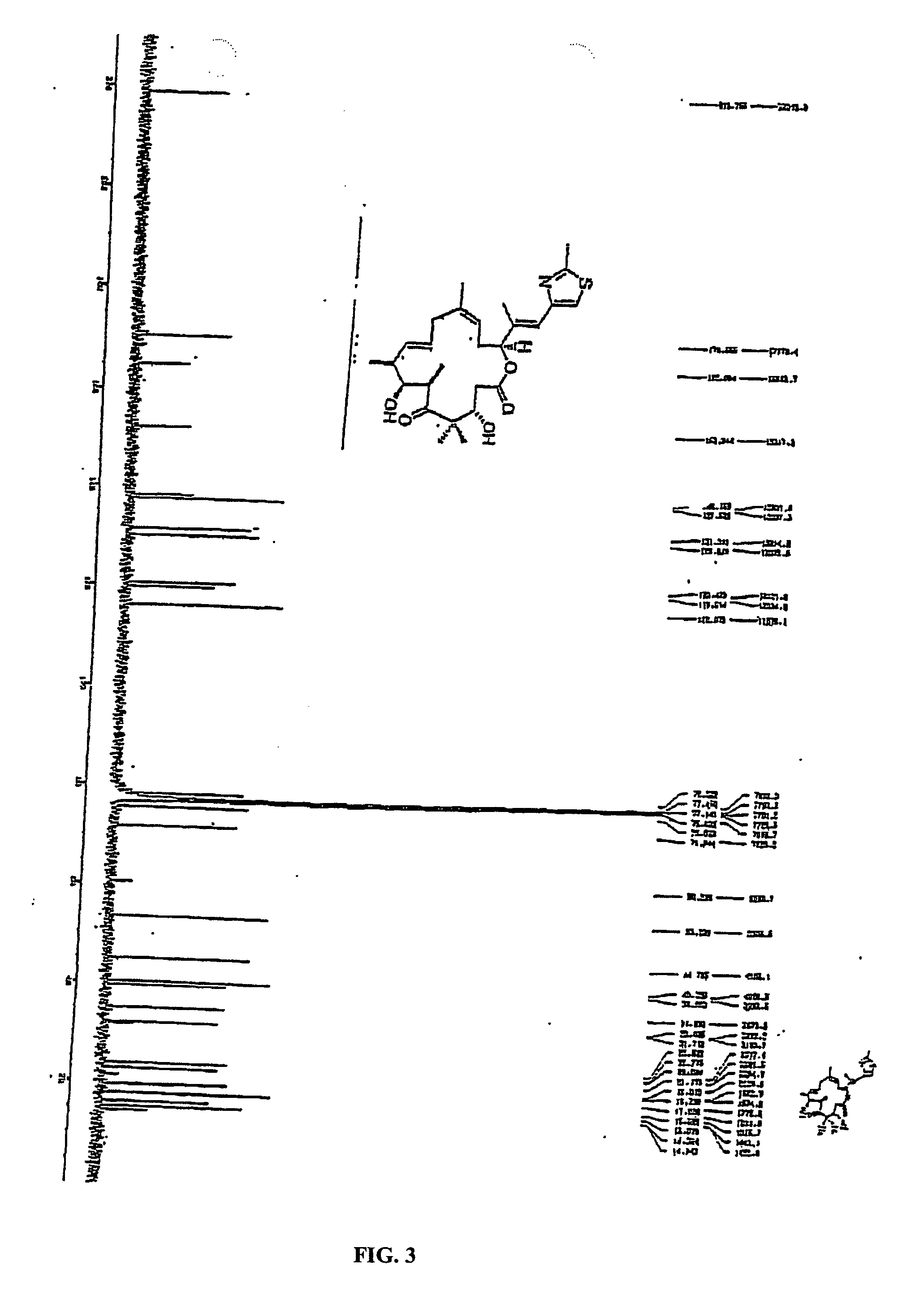Synthesis of epothilones, intermediates thereto, analogues and uses thereof
a technology of epothilone and epothilone, which is applied in the field of synthesis of epothilone, intermediates thereto, analogues, etc., can solve the problems of worrisome narrow therapeutic index, taxol® is far from an ideal drug, and is vulnerable to deactivation
Inactive Publication Date: 2005-06-30
SLOAN KETTERING INST FOR CANCER RES
View PDF4 Cites 14 Cited by
- Summary
- Abstract
- Description
- Claims
- Application Information
AI Technical Summary
Benefits of technology
[0432] The CAG myeloma cell line displays many features of clinical multiple myeloma with both phenotype (CD38+CD138+CD45−) and in vivo engraftment. A xenograft NOD-SCID myeloma mouse model was established by intravenously injection of 10˜15 million of CAG cells engineered with fusion HSV-TK-eGFP-Luciferase gene. Therefore whole animal imaging by luciferase bioluminescence can be applied to evaluate tumor burden and drug efficacy in real-time, non-invasively reporting in living mice. The myeloma mouse exhibits bone marrow infiltration and pathological osteolytic bone lesion after 7 to 20 days tumor injection. After implantation of tumor cells, the mice were randomized and divided into vehicle control, dEpoB and Fludelone treatment groups. The dose of both dEpoB and Fludelone was 20 mg / kg, and the drugs were administered by intraperitoneal route. The average number of dose was 10 for dEpoB and 12 for Fludelone during the first 30 days of treatment. In addition, five doses of Velcade (6.25 ug / mouse, i.v) were administered in 3 out of 7 mice initially treated with Fludelone between 35 to 45 days. The results showed that myeloma mice treated with Fludelone had significantly decreased tumor burden evaluated by bioluminescence imaging versus mice treated with dEpoB and controls. All control mice died within 30 days after initiation of treatment, however, Fludelone treated mice had at least doubled the survival time than controls. There was no difference in survival between control and dEpoB treated mice. In combination with the proteasome inhibitor, Velcade, the tumors localized in vertebrate column and femurs can be greatly reduced, indicating that this combination can attack myeloma cells even under marrow microenvironment protection.
[0437] The synthesis of the polypropionate fragment 25 was enabled by two critical aldol reactions, which established the relative configuration of the C3, C6, and C7 stereocenters. The first aldol reaction involved reaction of the Z-enolate of the ethyl ketone 30 with Roche aldehyde 31 (Cohen, N; Eichel, W. F.; Lopresti, R. J.; Neukom, C.; Saucy, G. J. Org. Chem. 1976, 41, 3505; Nagaoka, H.; Kishi, Y.; Tetrahedron 1981, 37, 3873; Roush, W. R.; Palkowitz, A. D.; Ando, K. J. Am. Chem. Soc. 1990, 112, 6348; each of which is incorporated herein by reference) to provide the desired 32 with high diastereoselectivity. Recourse to 31, allowed by this synthesis, is a significant advantage over the use of earlier aldehydes which required resolution for the attainment of enantiomerically pure starting materials.
[0447] Another advantage of the restructured (second generation) synthesis, described above is that a variety of heterocycles can be installed via ketone intermediates 39a and 40a. This point is well highlighted by the synthesis of 9,10-dehydro-dEpoF. Wittig reaction of the ketone with the appropriate phosphonium ylides afforded the desired 9,10-dehydro-dEpoF compounds 57 and 59 in high yield and with high E / Z selectivity. Furthermore, we were able to efficiently convert the 21-hydroxy 59 to derivatives of the type 96 and 97, containing amino functionality at C21 in several steps as shown below.
[0452] Remarkably, treatment of MX-1 xenografts with 30 mg / kg dosages of Fludelone, resulted in complete tumor disappearance and the absence of any relapse for over two months after suspension of treatment (See FIG. 83A). Most importantly, these therapeutic successes can be achieved either by 6 hr-i.v. infusion or by oral administration (See FIGS. 83B and 87A). On the other hand, treatment of the Mx-1 xenografts by oral administration of taxol did not affect the tumor (See FIGS. 83B and 87A). It goes without saying that if translatable to the human clinical setting, achievement of oral activity could be of significant advantage.
Problems solved by technology
In spite of its unquestioned clinical value as a front-line chemotherapeutic agent, Taxol® is far from an ideal drug.
Its marginal water solubility necessitates recourse to formulation vehicles such as Cremophores that pose their own risks and management issues (Essayan et al.
Moreover, Taxol® is vulnerable to deactivation through multiple drug resistance (MDR) (Giannakakou et al.
While the naturally occurring compound, epothilone B (2b, EpoB, in Scheme 1), is a potent member of the epothilone family of natural products, it unfortunately possesses, at least in xenograft mice, a worrisomely narrow therapeutic index (Su et al.
Method used
the structure of the environmentally friendly knitted fabric provided by the present invention; figure 2 Flow chart of the yarn wrapping machine for environmentally friendly knitted fabrics and storage devices; image 3 Is the parameter map of the yarn covering machine
View moreImage
Smart Image Click on the blue labels to locate them in the text.
Smart ImageViewing Examples
Examples
Experimental program
Comparison scheme
Effect test
example 1
[0328]
example 2
Noyori Reductions
[0329]
example 3
Noyori Reductions
[0330]
the structure of the environmentally friendly knitted fabric provided by the present invention; figure 2 Flow chart of the yarn wrapping machine for environmentally friendly knitted fabrics and storage devices; image 3 Is the parameter map of the yarn covering machine
Login to View More PUM
| Property | Measurement | Unit |
|---|---|---|
| Weight | aaaaa | aaaaa |
| Weight | aaaaa | aaaaa |
| Weight | aaaaa | aaaaa |
Login to View More
Abstract
The present invention provides compounds of formula (I): as described generally and in classes and subclasses herein. The present invention additionally provides pharmaceutical compositions comprising compounds of formula (I) and provides methods of treating cancer comprising administering a compound of formula (I).
Description
PRIORITY INFORMATION [0001] The present application is a continuation-in-part of and claims priority under 35 U.S.C. § 120 to co-pending application U.S. Ser. No. 10 / 435,408, filed May 9, 2003, which is a continuation-in-part of and claims priority under 35 U.S.C. § 120 to co-pending application U.S. Ser. No. 10 / 402,004, filed Mar. 28, 2003, which claims priority under 35 U.S.C. § 119(e) to co-pending provisional applications U.S. Ser. No. 60 / 405,823, filed Aug. 23, 2002, entitled “Synthesis of Epothilones, Intermediates Thereto and Analogues Thereof”; U.S. Ser. No. 60 / 408,589, filed Sep. 6, 2002, entitled “Synthesis of Epothilones, Intermediates Thereto and Analogues Thereof”; U.S. Ser. No. 60 / 423,129, filed Nov. 1, 2002, entitled “Synthesis of Epothilones, Intermediates Thereto and Analogues Thereof”; U.S. Ser. No. 60 / 456,159, filed Mar. 20, 2003, entitled “Synthesis of Epothilones, Intermediates Thereto and Analogues Thereof”; the entire contents of each of which are incorporated...
Claims
the structure of the environmentally friendly knitted fabric provided by the present invention; figure 2 Flow chart of the yarn wrapping machine for environmentally friendly knitted fabrics and storage devices; image 3 Is the parameter map of the yarn covering machine
Login to View More Application Information
Patent Timeline
 Login to View More
Login to View More IPC IPC(8): A61K31/426C07D277/20C07D417/06C07D493/04
CPCA61P35/00A61P35/02C07D413/06C07D417/06C07D493/04
Inventor DANISHEFSKY, SAMUELRIVKIN, ALEXEYYOSHIMURA, FUMIHIKOCHOU, TING-CHAOGABARDA, ANADONG, HUAJINWU, KAIDAMOORE, MALCOLMDORN, DAVID
Owner SLOAN KETTERING INST FOR CANCER RES
Features
- R&D
- Intellectual Property
- Life Sciences
- Materials
- Tech Scout
Why Patsnap Eureka
- Unparalleled Data Quality
- Higher Quality Content
- 60% Fewer Hallucinations
Social media
Patsnap Eureka Blog
Learn More Browse by: Latest US Patents, China's latest patents, Technical Efficacy Thesaurus, Application Domain, Technology Topic, Popular Technical Reports.
© 2025 PatSnap. All rights reserved.Legal|Privacy policy|Modern Slavery Act Transparency Statement|Sitemap|About US| Contact US: help@patsnap.com



